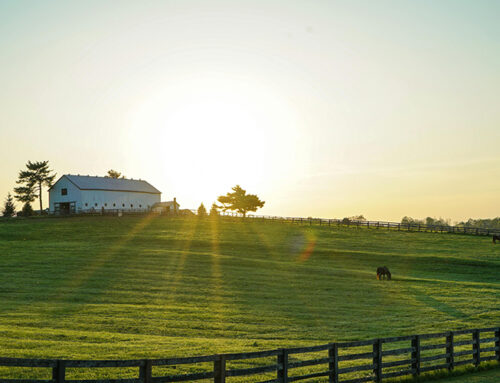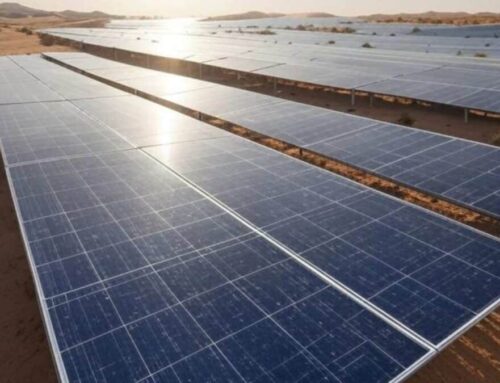Guest columnist Darcy Dumont: A year of climate wake-up calls
February 9, 2025
I am not a climate scientist but have been reading about the potential impacts of climate change for about 15 years. I gleaned a lot from the U.S. Environmental Protection Agency website around 2010. It focused on the signs of climate change, including higher temperatures, more droughts, changing weather patterns, less snowpack, shrinking sea ice, melting glaciers, thawing permafrost, increased acidity of oceans with loss of coral reefs, rising sea levels and warming seas — and their impacts.
The climate impacts caused by those changes, I learned, are far-reaching. Expected for many years have been the events we are now seeing around the world. Drought causing crop and food supply loss, more frequent and intense wildfires, loss of water supply. Wildfires causing loss of homes, wildlife habitats and forests.
Warming seas causing more and stronger coastal storms and hurricanes. Higher temperatures causing electricity shortages and blackouts. Insect-borne diseases moving with the rising temperatures. Rising seas causing population migration from the coasts. And much more.
I thought I had heard everything and been warned about everything, but 2024 brought a number of climate change wake-up calls. They were abrupt and dramatic impacts — new and unheard-of events caused by multiplier effects and domino effects. As the New York Times recently reported: “It’s a new Era: How Climate Change is Supercharging Disasters.” And some of these impacts we felt in Massachusetts.
Multiplier effect: Smoke plus wind from Canadian wildfires travels far
We felt this strongly in Massachusetts. The Mid Atlantic and some New England states were blanketed with the smoke from the Canadian wildfires in August 2024, causing dangerous levels of air pollution and a low visibility.
Multiplier effect: Droughtplus supercharged windin California fires
The combination of extremely high winds, drought and wildfires caused Los Angeles to burn faster than the multiple fires could be contained. California normally has wildfires and normally has fast-moving Santa Ana winds, but the combination of climate change-caused conditions arguably supercharged the disaster.
Officials say the winds that fueled the devastating fires in three parts of Los Angeles County were much more erratic and unpredictable than a typical dry offshore wind pattern — and struck areas unaccustomed to such events with gusts of 80 mph, sending embers miles ahead of the fire, according to the Los Angeles Times.
Article continues after…
L.A. was not prepared for such a huge disaster requiring so much water so quickly, and the loss of entire residential neighborhoods within days.
To add even more effects, the burning of homes containing plastics, electronics and other toxins contributed to the dangerous air quality.
Massachusetts brushfires
Massachusetts also had a significant drought in the fall of 2024 and those conditions worsened. More acres burned in wildfires in October and November across Massachusetts than burned in 2022 and 2023 combined.
Multiplier effect: Warming oceans plus hurricanes cause catastrophic inland flooding
Ocean warming caused a lot of problems. First, it caused the hurricanes to gain strength much faster. It caused one hurricane to follow another so closely that the debris from the first was not yet cleaned up before the second made landfall in Florida.
Hurricane Helene arrived on Florida’s Gulf Coast as a Category 4 storm on Sept. 26, causing catastrophic flooding across the southern Appalachians, slamming and cutting off Asheville, North Carolina, widespread wind damage from the Gulf Coast to the North Carolina mountains, and storm surge flooding along portions of western Florida.
Hurricane Milton made landfall as a Category 3 hurricane south of Tampa Bay on Oct. 9, causing widespread damage across Florida with deadly tornadoes and storm surge. “The storm’s rate of rapid intensification — a 90 mph increase in wind speed during a 24-hour period from early Oct. 6 to early Oct. 7 — was among the highest ever observed,” according to experts at the University of Miami.
Multiplier effect: Uptick oftornadoes in New York
Our neighbor, New York, suffered a huge increase in the number of tornadoes confirmed by the National Weather Service, moving from nine in 2023 to 32 in 2024. That’s the most since tornadoes were first recorded in the state in 1950.
Hurricane Beryl rapidly intensified as it passed over Gulf of Mexico waters that were 2-3 degrees warmer than normal based on human caused climate change. It then spawned 68 tornadoes between July 8 and 10, 2024, including the large outbreak in New York fueled by Beryl’s remnants before it moved out to sea.
Secondary impacts: Richmond, Virginia loses water supply
On Jan. 6, 2025, a winter storm associated with the polar vortex caused a power outage that shut down Richmond’s water treatment plant, with a boil water order lasting for 5 full days. To compound the problem, low water pressure made it impossible for many to use tap water for anything, including flushing toilets.
According to the Environment and Energy Study Group, “changes in temperature differences can make the polar vortex expand to more southern latitudes. While this phenomenon occurs naturally, climate change is expected to impact the frequency and severity of polar vortex events. Communities must consider adaptation strategies to avoid blackouts and improve overall home energy efficiency, as loss of power when temperatures are so low can become deadly—246 people died during the Texas polar vortex freeze in 2021, many from hypothermia.”
So you may say, what’s the point of all this dooming and glooming? The point is that climate impacts are now coming abruptly, without warning in configurations that have not been anticipated.
My advice to municipalities, businesses and individuals is to continue to help minimize the overall climate disruption by reducing our greenhouse gas emissions — but also to prioritize adapting our infrastructure in preparation for coming changes. Strongly resist any attempts, at any level, to stop progress on climate action. Prepare for and get creative about the new, unpredictable and challenging “normal.”
Darcy DuMont is a former town councilor and sponsor of the legislation creating the Amherst Energy and Climate Action Committee. She is a founding member of Zero Waste Amherst, Local Energy Advocates of Western MA, and the Amherst Climate Justice Alliance and a non-voting member of Valley Green Energy Working Group. She can be contacted at dumint140@gmail.com.
Search
RECENT PRESS RELEASES
Related Post









